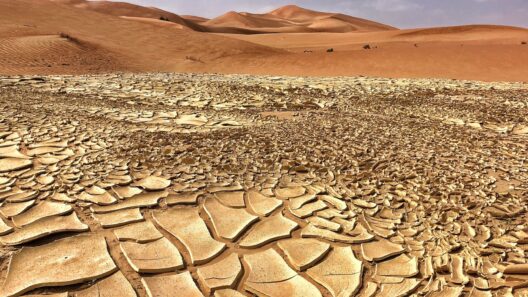The American Southwest: a unique realm where the topography dances between the ruggedness of mountains and the vastness of deserts. The climate in this region is not merely a backdrop but a living tapestry that shapes the ecosystems, cultures, and lifestyles of its inhabitants. Understanding the intricacies of the Southwest’s climate beckons a shift in perspective—a curiosity to unravel the atmospheric phenomena that render this area distinct and remarkable.
Geographically, the Southwest typically encompasses states such as Arizona, New Mexico, California, Nevada, Utah, and parts of Colorado and Texas. This diversity in geography inherently begets a broad array of climatic conditions, with significant variations influenced by elevation, latitude, and proximity to bodies of water. Contrary to the conventional notions of temperate weather, the Southwest presents a climate that oscillates between arid extremes and sudden bursts of moisture, forging a unique environmental characteristic.
The dominant climate type in the Southwest is classified as semi-arid, with substantial portions classified as desert. This classification stems from the region’s limited precipitation, which averages between 10 to 20 inches annually in many areas. The location’s weather patterns illustrate a compelling narrative of the interplay between moisture inputs and evaporation rates. In essence, the arid landscape is continuously battling the forces of evaporation, which is often heightened by sweltering temperatures.
Moreover, the Southwestern climate is heavily affected by the influence of the North American Monsoon, particularly during the summer months. This meteorological phenomenon typically commences in late June and sustains through September. During this period, the land experiences a profound transformation, as the often parched earth eagerly absorbs the moisture-laden air riding in from the Gulf of California and the eastern Pacific Ocean. The result? An abrupt shift in weather patterns, with thunderous storms punctuating the serenity of the dry season. These monsoonal rains can result in flash flooding, a serious hazard that requires both respect and vigilance from those navigating the terrain.
Equally alluring is the phenomenon of temperature variation across the region. The term “diurnal temperature variation” finds significance here. Daytime temperatures in the low deserts can soar into the triple digits during summer, while nighttime temperatures may plummet to near freezing in the higher elevations as the sun sets, revealing an underlying coolness. This stark contrast can be attributed to low humidity and high elevation, fostering a landscape of rugged beauty amidst temperature extremes.
Winter in the Southwest introduces its own narrative, as many areas are blessed with mild conditions. While the higher elevation regions, such as the Rocky Mountains, may be blanketed in snow, the low deserts often bask in sunshine and warmth. However, occasional storms can sweep across the landscape, bringing with them bitter cold snaps that surprise and enchant residents and wildlife alike. Such fluctuations in winter weather speak to the region’s complexity—a flirtation with meteorological extremes.
The flora and fauna of the Southwest possess profound adaptations to thrive in this unique climate. Cacti, for instance, embody resilience, employing specialized structures that minimize water loss. Similarly, many animal species exhibit nocturnal behaviors to avoid searing daylight temperatures, emerging only under the protective cloak of night. The interconnectedness of these survival adaptations with regional climate conditions paints a vivid picture of life in the American Southwest.
Water scarcity is a pertinent issue, and understanding the climate context is crucial for grasping the environmental challenges faced by communities across the Southwest. Reservoirs and aquifers, vital to agriculture and urban living, are under considerable stress due to increasing temperatures and dwindling snowfall—a direct consequence of climate change. The ramifications of this hydrological imbalance extend beyond mere precipitation figures; they encompass water management practices, agricultural planning, and social equity issues as marginalized communities grapple with resource allocations.
Climate change, indeed, looms as an existential threat over the Southwest, making the elucidation of its climate even more pivotal. Predictions indicate an elevation in average temperatures and an alteration in precipitation patterns, potentially exacerbating drought conditions. Increased frequency and intensity of wildfires are also anticipated, posing risks not only to wildlife but also to human habitation. As communities forge ahead, awareness and adaptive strategies become essential tools in navigating the climate crisis.
In conclusion, the climate of the Southwest region of the United States is a multifaceted tapestry woven through time and tide. It embodies a lush yet barren coexistence, reflecting the delicate balance between life and the elements. Those who tread upon this land must recognize its fragility—the very essence of the arid beauty rests upon a precarious foundation. Whether drawn by the allure of the landscapes or the intricate dance of weather patterns, it is vital to cultivate an informed understanding of the climate that defines this extraordinary region. Through this lens, not only can one appreciate the magnificence of the Southwest, but also grapple with the realities that climate change imposes. A shift in perspective reveals the urgent need for stewardship—caring for a region as enigmatic as it is beautiful.






